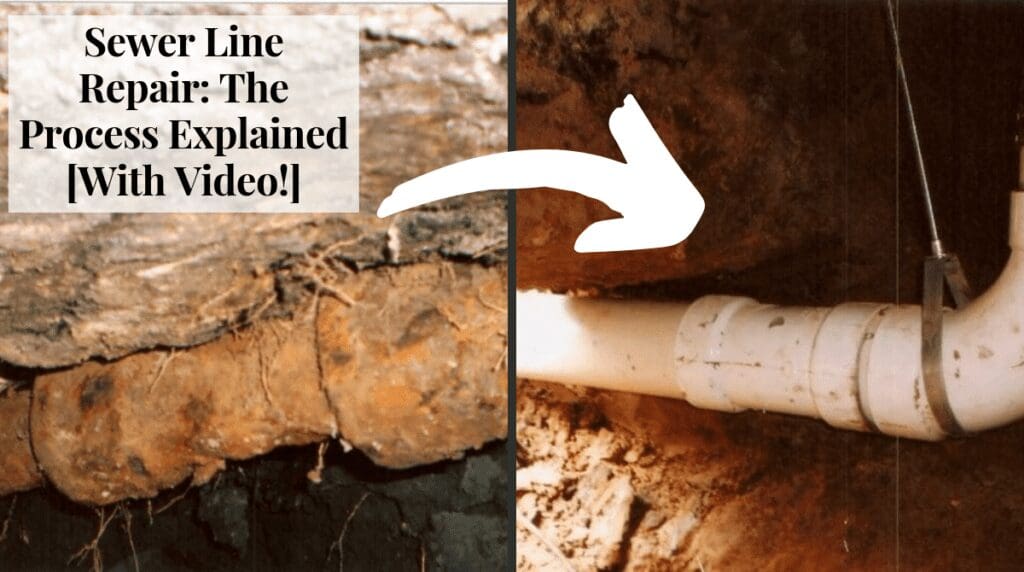When it comes to owning a home, there are a few words that no one really wants to hear due to the connotations that come with their repairs. Foundation repair is one of them, and sewer line repair is another. Thinking that something may be wrong with your sewer line is scary, and overwhelming, but a lot of that fear and worry comes from not knowing what to expect. In order to alleviate some of that stress and make sure that you are prepared for any kind of repair that may happen, Allied has put together this guide on the sewer line repair process, with a video!
Sewer Line / Foundation Connection?
Sometimes, foundation issues can be a sign that something is going on with the sewer line. Interior settlement of the foundation, such as cracks in the walls or doors that are not closing correctly, is a sign that something is going on underneath. If this is a worry, something called a hydrostatic test will be done. This test determines if there are any leaks, as leaks will erode or soften the dirt or soil that may make up part of the foundation. If the soil is eroded or softened, the slabs of the foundation will lose the natural support they have and begin to sink, causing foundation issues.
Hydrostatic Test
The hydrostatic test is a test that is very simple but can tell a lot. The process begins with placing a test ball into the sewer line. Blocking off the sewer line from the house to the city main will prevent all water from draining.
Following that, all of the faucets in the house will be opened in order to fill the drain lines and raise the water level that the test ball blocked off. Once the entire system is filled up, it is monitored to see if the water level drops. If there are no leaks, the water level will hold steady and nothing else will need to be done. If the water level drops, that is an indication of a leak somewhere in the system that needs to be addressed.
The simplicity of the test makes it something that is very black and white – the indication will either be a yes or a no! Sometimes, however, the nature of the pipes will also indicate whether or not they need to be replaced. When it comes to ABS or cast-iron pipes, pipe materials that are known to deteriorate over time, a complete overhaul and replacement will be recommended.
Sewer Line Replacement
When it comes to doing the actual sewer line replacement, it starts off relatively easy. The first step is to locate the kitchen, bathrooms, and laundry rooms located in the house. Outside in the yard, we find where the city main line meets the drain lines.
The next step is the beginning of the excavation. An access hole is created that is 5 feet wide and 5 feet deep. This is placed next to the edge of the foundation in order to provide a quick and easy access point to tunnel underneath the house without disturbing the foundation.
With drilling spades and shovels, the excavation continues by burrowing underneath the foundation. This is done to locate the deteriorated pipes for the kitchen, the washer in the laundry room, and the pipes in the bathroom. Once all of the tunnels have been excavated for worker access, plumbers will cut the pipe and remove it from the sewer system by breaking it into manageable pieces and then removing them via the tunnels.
These old pipes are replaced by new PVC piping. These pipes are then carefully supported by a system of hangars installed and anchored to the bottom of the foundation. These hangars are attached to the foundation via drilling, to ensure that they remain sturdy and stable in their new home. Mounted in place and secured from movement, the pipes are placed with a gradual slope. This positive slope is done on purpose to guarantee that the proper drainage is allowed through all of the pipes from the home all the way down to the city line.
Cleanup
Once the system is entirely put into place, it is tested with the same hydrostatic test to determine if all of the pieces are holding in the places they are meant to, while preserving the water level. If everything holds and everything looks good, the cleanup process will begin. All of the dirt that was excavated from underneath the house to create the tunnels will be put back into place. Any leftover dirt is packed up and hauled away, and a top to bottom cleaning is done to ensure all tools are removed from the yard, all dirt is cleared, and no damage was done to the rest of the home.
The scariest part of getting a difficult repair like a sewer line repair done is the fear of the unknown. With this guide, we hope we have been able to alleviate some of the additional stress and cleared up some of the mystery on this common repair. Allied prides itself on offering quick repairs, usually taking only two to three days. For a list of indicators on potential sewer line problems, take a look at our sewer line page. For any questions or concerns, do not hesitate to reach out to us.

